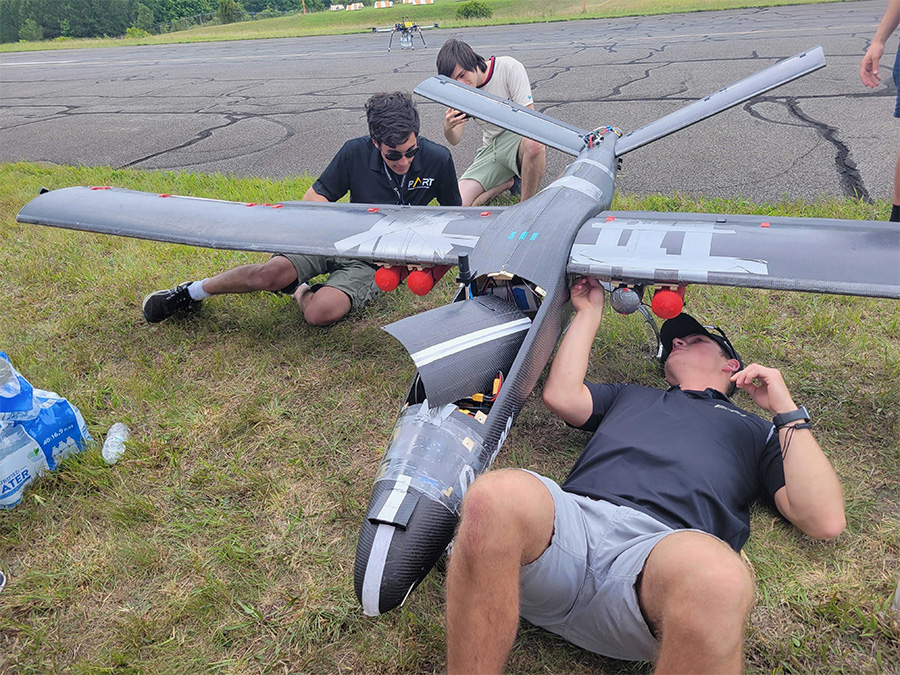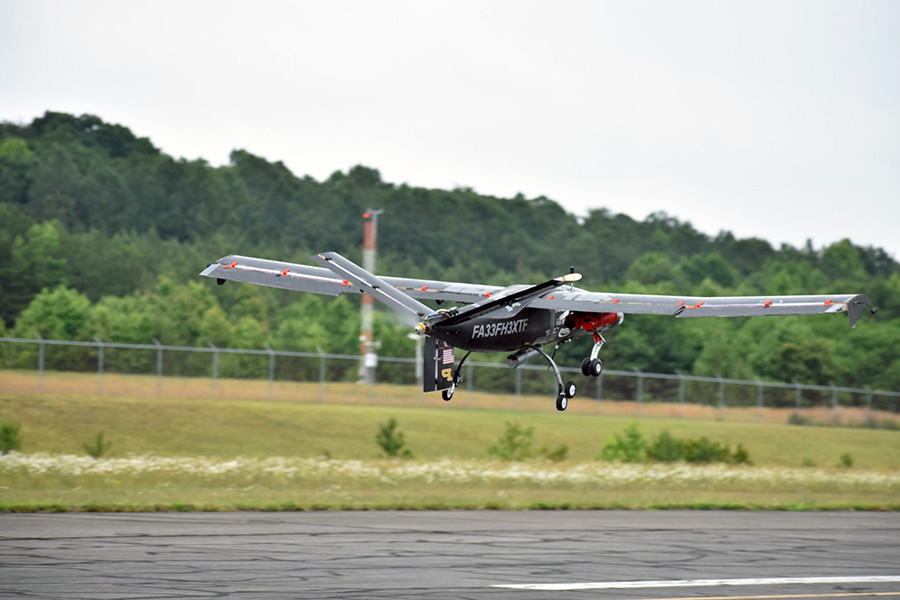Purdue Aerial Robotics places 13th in International UAV Competition; 3rd among US Teams
| Author: | Alan Cesar |
|---|

After a demanding journey spanning nine months, the Purdue Aerial Robotics Team (PART) showcased their engineering skill on the global stage at the 2023 Student Unmanned Aerial Systems (SUAS) international competition. The team, consisting of 50 undergraduate students representing 9 different majors displayed their cutting-edge aerial technology to tackle this year's novel mission.
The event, which attracted over 70 teams from 30 countries, centered around designing and build autonomous aircraft capable to deliver packages. These Unmanned Aerial Systems (UAS) had to navigate themselves safely, identify potential drop zones, and deliver packages to designated safe locations without any human help.
PART took an agile engineering approach to take advantage of their diverse array of skills and perspectives, leading to groundbreaking solutions from the initial stages of design to the final testing. The team's "Competition Division" planned a large-scale fixed-wing vehicle with a 14-foot wingspan, with a gross weight of 55 lbs. The team built the fuselage from carbon composite materials.
"The PART members demonstrated unparalleled commitment and collaboration throughout the development process," said Shreyas Sundaram, the faculty advisor for PART.

The competition pushed these autonomous aircraft through a series of challenges, including complex airspace interactions and precise package deliveries. PART's UAV showcased its agility and precision as the event unfolded, placing them 13th overall and third position among U.S. teams.
The team attributes their success to a two-year transformation of their structure, led by seniors Matthieu Opdyke (AAE) and Eric O'Keefe (ME), and mentored by ECE associate professor Shreyas Sundaram and AAE master's student Charles D'Onofrio.

The team structure of PART was been reimagined to foster a comprehensive and holistic approach to their mission. Their three branches — the competition team, researcn and development, and business management — now work in unison to develop students into principled industry leaders for their post-undergraduate careers.
Implementing an agile workflow, with the leadership team conducting scrum-style "standup" meetings several times per week, highlighted progress, addressed blockers, and was an opportunity to voice integration concerns. Weekly, organization-wide "all-hands" meetings helped keep members on top of about logistical and technical updates. Members say it also fostered unity and collaboration within the team. The business management division played a crucial role in the team's success by developing valuable relationships with key industry partners, including SAAB, NASA, AeroVironment, and Sandia. Members credit these partnerships with mentorship and with honing PART's technical capabilities, while also identifying future talent for those companies.
The collaborative efforts of the team's divisions allowed PART to shine on the global stage, showcasing their engineering acumen and innovative prowess. The team returns to Purdue University with accolades, prepared to refine their designs and reach even higher.
